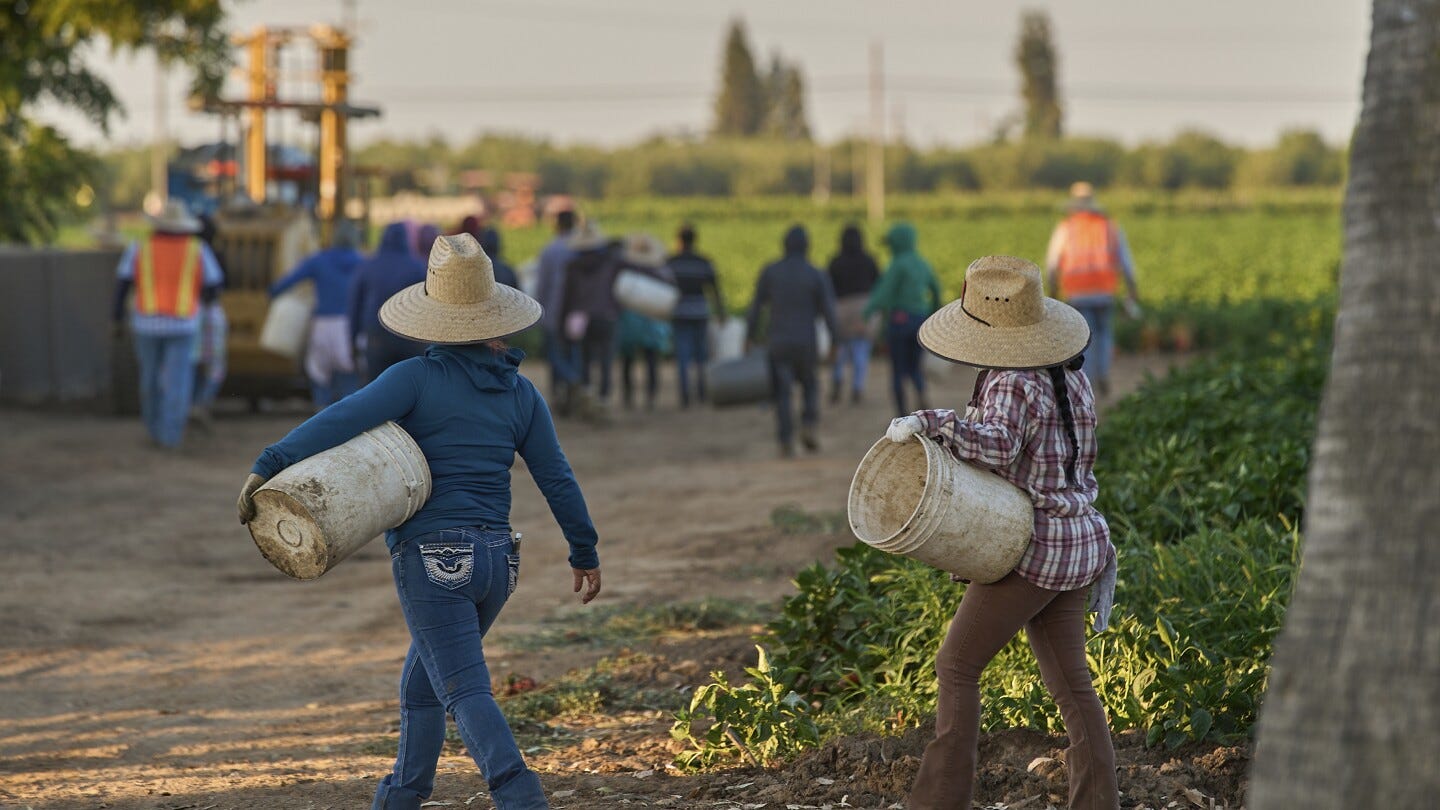Why 1.2 Million US Workers Vanished and What It Means for You?
The Invisible Exodus
You might not see them, but 1.2 million immigrants have disappeared from the U.S. labor force, a staggering shift uncovered by recent data. Join me as we uncover the quiet but profound impact of this exodus on everything from your grocery bill to the future of American industry, and ask ourselves: what are the real costs of our immigration policies?
A Startling Absence: Confronting the Vanishing Workforce
When I first saw the numbers, I had to double-check. 1.2 million. That's a massive number of people, enough to fill several major cities. But these weren't just people; these were workers, gone from our labor force in a matter of months. Specifically, from January through July, preliminary Census Bureau data, expertly crunched by the Pew Research Center, showed this dramatic disappearance of immigrants from the U.S. workforce. It makes you wonder, doesn't it? Where did they go, and what does it truly mean?
This isn't just a dry statistic for economists; it's a silent shift that touches all of us. Whether you realize it or not, immigrants play a huge role in keeping our economy moving. They make up nearly 20% of the total U.S. workforce, particularly in crucial areas like farming and construction. So, when such a significant chunk of this demographic vanishes, the ripples are bound to reach every corner of our lives.
The Data Speaks: Unpacking the 1.2 Million Figure
Let's dive a little deeper into what this data really tells us. The 1.2 million immigrants who've disappeared from the labor force include both those who are in the country without authorization and legal residents. This isn't about one specific group; it's a broad-based reduction across the immigrant population, influenced by stepped-up immigration policies. Think about it: stricter enforcement, more deportations, fewer new arrivals – all these factors contribute to a shrinking pool of available labor.
The true test of a policy is not its intention, but its consequence.
– Milton Friedman (attributed)
This quote, often attributed to Milton Friedman, really hits home here. Regardless of the intentions behind stricter immigration policies, the consequence is a significant disruption to our labor market. Industries that have historically relied on immigrant workers are suddenly finding themselves with massive gaps that aren't easily filled. It's a stark reminder that economic systems are incredibly complex, and changes in one area can have unforeseen effects on many others.
Ripple Effects: How This Impacts Your Daily Life
You might be thinking, 'Okay, so 1.2 million people are gone from the labor force. How does that affect *me*?' The answer is, in more ways than you might realize. Consider the food you eat. Immigrants are often the backbone of our agricultural sector, from planting to harvesting. Fewer workers mean higher labor costs for farmers, which can translate into higher prices at the grocery store. Suddenly, that carton of berries or loaf of bread becomes a little more expensive.
Then there's housing. The construction industry also relies heavily on immigrant labor. A shortage of workers means fewer homes built, slower completion times for projects, and ultimately, rising housing costs. This isn't just about big corporations; it's about the small business owner struggling to find staff, and it's about your own wallet. The disappearance of these workers creates an economic vacuum, pushing up prices and slowing down the very engines of our everyday economy.
The Human Cost: Unseen Impacts and Moral Interrogations
Beyond the purely economic numbers, there's a profound human story here. Policies that lead to such a massive reduction in the labor force don't just affect spreadsheets; they affect families, communities, and the very fabric of our society. The uncertainty, the fear, and the forced displacement for many can be devastating. This situation forces us to confront difficult questions about who we are as a nation and how we balance competing values.
No society can long remain prosperous and free if it doesn't give respect to productive labor, regardless of where that labor comes from.
– Adapted Principle
This principle reminds us that every person who contributes their labor to our society, whether they're picking crops or building homes, is part of our collective prosperity. When we lose sight of that, or when policies inadvertently undermine it, we risk more than just economic downturns; we risk eroding the very foundation of a fair and productive society. It's a moment for reflection, asking ourselves if the consequences truly align with our highest ideals.
Go Deeper
Step beyond the surface. Unlock The Third Citizen's full library of deep guides and frameworks — now with 10% off the annual plan for new members.
Moving Forward: Understanding Our Shared Economic Future
So, what can we take away from this? For me, it's a powerful reminder that our economy is a living, breathing entity, deeply interconnected and sensitive to policy decisions. The disappearance of 1.2 million immigrant workers isn't just a headline; it's a signal that our approach to immigration has significant, tangible consequences for everyone.
Understanding these dynamics helps us move beyond simple narratives. It encourages us to look at the full picture: the economic needs, the human element, and the long-term impact on our communities. It's a complex puzzle, but by grappling with the data and asking hard questions, we can start to form a more complete picture of our shared economic future and advocate for policies that truly serve the greater good.



